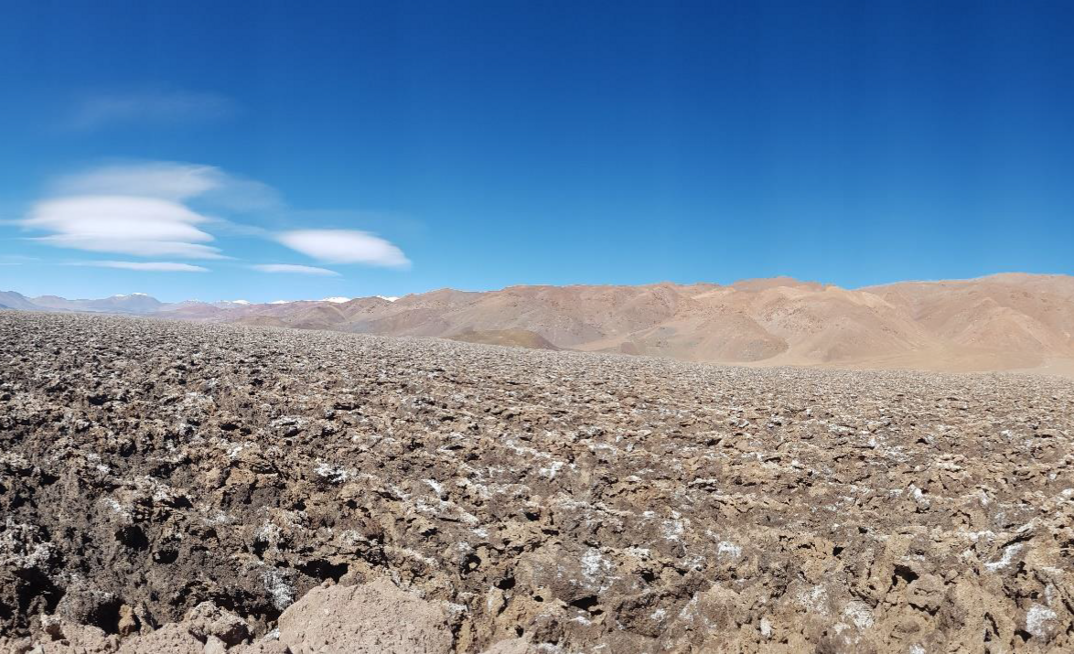Mine sites and drilling projects can be located in areas where access to fresh water is very limited. For a variety of reasons, often the only option is to drill using mine water, salt water, or water containing an excess of minerals and deposits. In these circumstances the use of drilling fluid polymers becomes particularly difficult. Achieving the right viscosity is key, but mixing the products without any lumps forming or without the products separating is quite the challenge.
This was also the situation facing one of drilling solutions provider Fordia's customers in Argentina. Specialty drilling company Energold was working at a mining operation in Tres Quebradas, located in the municipality of Fiambalá, about 30km from the border with Chile. Here, the reservoir used by the mine does not hold any fresh water; instead it contains brine water, which is super-saturated with sodium, calcium and chlorine.
Difficult conditions
The water on the project site is 25% heavier than fresh water, with large amounts of manganese, giving it a black colour. To make matters worse, there is a nearby hot spring with alkaline and carbonated water, as well as water that is acidic and has a high metallic content. This enters directly into the salt flats and is concentrated by evaporation. These thermal contributions have a lithium content as high as 1,000mg/L. As a result, the ground was very hard, with a high concentration of chlorine and sulphur, and variable, with areas of sand and clay.
Energold's drilling team had been using drilling fluid additives in an attempt to get through the areas comprising sand and clay. The team was having difficulty getting the drilling fluid additives to mix properly, as the additives kept separating and decanting down to the bottom of the tank.
Core recovery in zones with clay and sand was very limited, and the inner tubes were often trapped by the soils. The very fine sand combined with the clay also caused blockages in the waterways of the bit. A lot of time was being spent on dealing with these equipment issues.
Proposed solution
The drilling team had been preparing a mixture of additives in fresh water that was then mixed with the salt water, but this solution required a lot of additives. Fordia's team was brought in to try and help improve recovery and reduce the expense of additives.
The new solution proposed by Fordia's field technician was to prepare a "viscosity pill" in a drum using pH-adjusted fresh water. It is important that soda ash be added to water in order to control the pH levels. Ideally, the pH level of the water before adding any additives should be between 7 and 10. The water's pH level can be tested easily using pH strips. Once the pH level is confirmed, the viscosity pill, which is a mixture of DD-2000, Torqueless, Sand Drill and DD-955, is prepared in a drum with the fresh clean water and pumped directly to the well to cause a pill effect. The recommended mixing time was five minutes, and the recommended Marsh viscosity was 75-80 seconds.
Once the pill was injected, drilling continued using salt water. The time it took for the salt water to dilute the pill allowed the team to drill 1.5m (the length of an inner tube) without any problems. The technique required very little fresh water that could affect the quality of the well walls.
Results
Following the use of this viscosity pill, Energold's operations manager noticed that core recovery had improved by up to 80%. What's more, the time that had been spent dealing with equipment issues was reduced by 50%, which meant more time (up to 2-3 hours per shift) could be spent on actual drilling.
"We are very pleased with the attention provided by Fordia's technical service representative. He took time to analyse our situation and provide a solution that achieved our goals," says Javier Lopez, operations manager at Energold. "He has so much experience and we are happy he was able to share it with us."
Technological advances are occurring in every industry, including mineral exploration, and drilling fluid additives are a solution to many of the problems facing diamond drillers. Unfortunately, many drilling projects may not have the conditions required for effective use of additives.
This case study shows that although one of the main prerequisites for using drilling fluid additives was scarce - in this case fresh water - creative solutions can be found. Fordia's field technician had offered product knowledge and vast experience in the use of drilling fluid additives, and he was able to help Energold not only improve core recovery, but lower the costs of using additives.


















